Tapeley Park: A Devonshire garden filled with dramatic flourishes at every turn
Non Morris discovers that experimentation, environmentalism and numerous dramatic flourishes invigorate this unusual Devonshire garden at every turn.

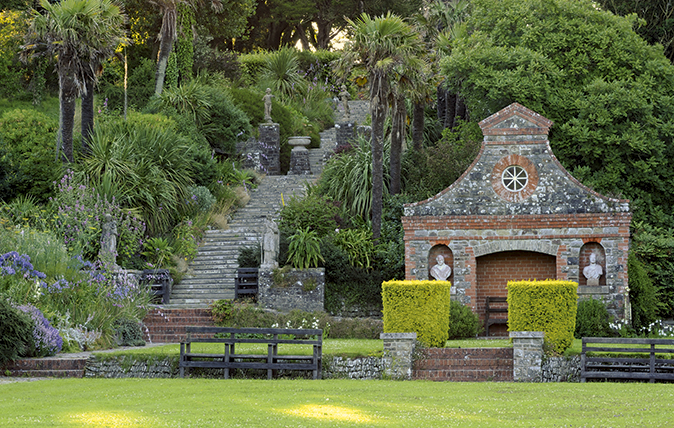
Few houses can have been built with such tantalising views. Grade II*-listed Tapeley Park, built in 1702 and remodelled in the 19th and early 20th centuries, sits in a commanding position looking down onto Devon’s Torridge Estuary, the pretty town of Bideford and out to Lundy Island in the distance.
‘I thought you were coming tomorrow,’ says Hector Christie with a schoolboy grin as I track him down, guided by the cheery sign: ‘Hippies use back door. No exceptions.’ He glances seawards for just a fraction too long as he describes how the estuary’s perfect surfing conditions are the result of the River Taw merging with the Torridge at just this point.
I have time to admire his green woollen jumper, which has flared sleeves and holes so big it looks as if it’s made of cartoon cheese, and his bucket hat bound with yellow-and-black plastic barricade tape. However, the moment of agony has clearly passed: ‘Don’t worry, the surf’s still going to be there tonight.’ And so, together with his English bull terrier Wayne, Hector graciously invites me on what will turn out to be one of my most uplifting garden visits of the year.
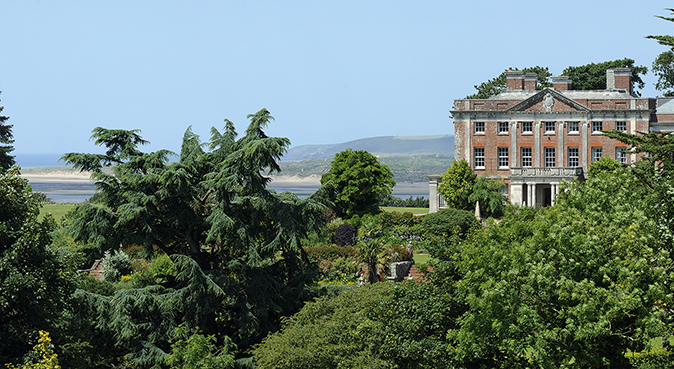
We walk past the south-facing façade of the house, imposing with its repeated columns of stone, but there is a softness and warmth to the wind-beaten red of the brick. There’s a clever, simple planting of a Magnolia grandiflora and an Acacia dealbata (mimosa) on each side of the main entrance, the trees growing lushly in their suntrap of a home.
We head up and westwards to the walled kitchen garden, a traditional productive plot on a perfect, south-facing slope with wonderful views over the rolling estate. There are long-established espaliered apple and pear trees, a storybook thatched potting shed and a 1930s greenhouse, with a curved roof, running the length of the wall. Hector is thrilled with the ingenious way the greenhouse has been restored with plastic guttering. ‘It’s a brilliant solution - it’s flexible, will last for ages and it cost about £300 instead of thousands.’
We hurtle through the potting shed to pay homage to the impressive water-storage system, a series of huge grey waterbutts, roof-high in neat rows against the barn beyond. We meet head gardener Chris Barham, who matches Hector in his enthusiasm for the way the system supplies water for the kitchen garden, new polytunnels, permaculture garden and the Italian terraces. ‘There’s a borehole if we need it - we’re self-sufficient.’
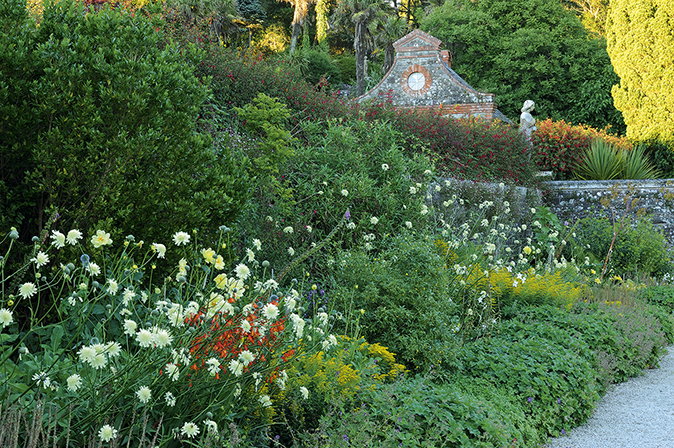
Experimenting with ways to be self-sufficient and sustainable is fundamental to the 21st-century Tapeley Park: ‘It’s about sharing this house and the buildings around it, developing and practising ideas of sustainability and looking after the place so that as many people as possible can enjoy it.’ The energy and unstuffiness of the approach simply can’t fail to win you round. ‘Look - there’s wild garlic here for four months of the year. I honk like a pig, but it’s free and it’s so good for you,’ advises Hector.
Exquisite houses, the beauty of Nature, and how to get the most from your life, straight to your inbox.
He inherited the house in 1988 from his aunt Rosamund, who famously gardened, chased after visitors for their entrance fee and did the teas single-handed - all while carrying a parrot on her head. When Hector was 19, it became clear to their father that younger brother Gus would be the man for the other family estate, Glyndebourne in East Sussex, and Hector for the farm in Devon. Although the latter’s journey has been more fiery, he’s managed ‘by the hair on my chinny chin chin’ to turn Tapeley around to its current, refreshing and inspiring form.
A large proportion of the stories you may have heard about Hector are true. A passionate protester against genetically modified (GM) crops, he dressed up as a GM potato in Germany and infiltrated the G8 summit in Genoa disguised as a priest (‘the Glyndebourne costume department has been a great help’), but, at Tapeley, he was also busy establishing one of the earliest and biggest permaculture gardens in the UK.
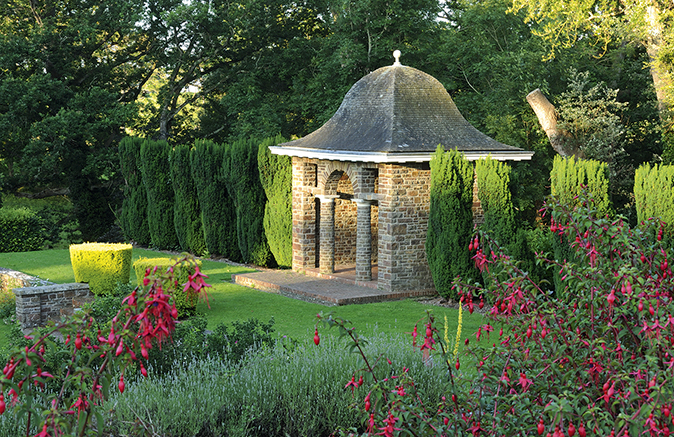
I meet Jenny Hayns, who choreographs this fascinating acre of garden that’s tucked into a sheltered spot lower in the grounds. Permaculture is a thoughtful, creative approach to the way plants work together. It uses layers of permanently productive plants: fruit trees growing above fruit bushes, which, in turn, grow above perennials - perhaps globe artichokes and fennel - which grow above ground-cover plants such as wild strawberry or ‘the X-factor plant’ comfrey. It cleverly exploits the vertical dimension, so that a vine will be trained up a mulberry tree, offering edible mulberry leaves in spring, followed by mulberries, followed by the grapes.
As ever, the storytelling approach at Tapeley is infectious. ‘Take blackcurrants - a blackbird’s favourite aperitif. In the Kitchen Garden, the birds just gobble them up, but, here, we let the stinging nettles grow through them to keep the birds off. When you want to harvest the currants, you simply cut the nettles down first.’
I’m smitten by the way my gardening knowledge is turned on its head. I knew that dahlia tubers were edible, but had never considered steamed shoots of solomon’s seal as an alternative to asparagus or using the leaves of pollarded lime as a salad.
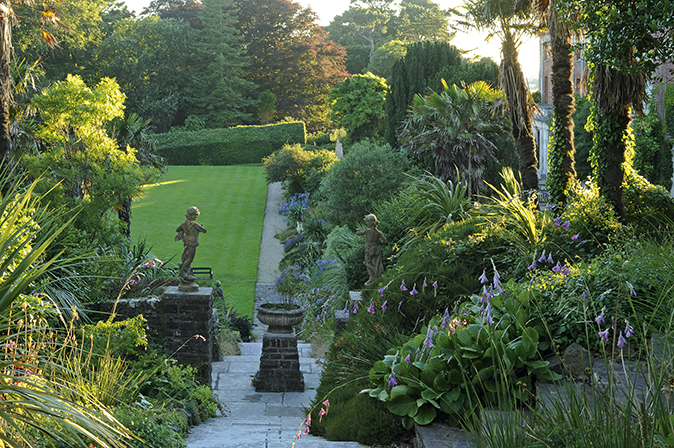
The Tea Rooms - based in the restored Queen Anne dairy, with food also served outside on the Dairy Lawn, with its border designed by Carol Klein - offers ‘chemical-free food fresh from the kitchen and permaculture gardens and even from the forest floor’. Beef and lamb will be sourced from the estate’s own ‘solely grass fed’ Highland cattle and sheep. ‘We advocate excellent food at a very reasonable cost,’ adds Hector, with his trademark no-nonsense passion. ‘You’ll be able to have your fill for a fiver.’
Buzzing with the unstoppable enthusiasm that pervades the whole estate, I head at last to the Italian terraces, the tiered gardens that fall elegantly away to the south of the house, created in the early 20th century by John Belcher under the watchful eye of Hector’s great-grandmother, Lady Rosamond Christie. I squeeze through a pair of mature Irish yews to find the crisp, angular form of a Quercus ilex tunnel to my right and, in front of me, a rich-red fuchsia hedge and dancing white festoons of solanum against lichen-covered, pale-grey stone.
Much of the latest planting on the terraces was the work of Hector’s wonderful ex-wife, Kirsty Macdonald (mother to their two children Bess and Archibald). Kirsty employed the services of Carol Klein and Mary Keen to do a complete overhaul of the three main Italian terraces, which offer a different palette at each level. The Middle Terrace is home to the Blue-and-Yellow Border, cheerful with the long-lasting, lemon-yellow dahlia Gloria van Heemstede and the paler yellow Cephalaria gigantea. The Bottom Border is unashamedly pink and the stars of the show are the voluptuous pink dahlias ‘that were here long before I arrived’.
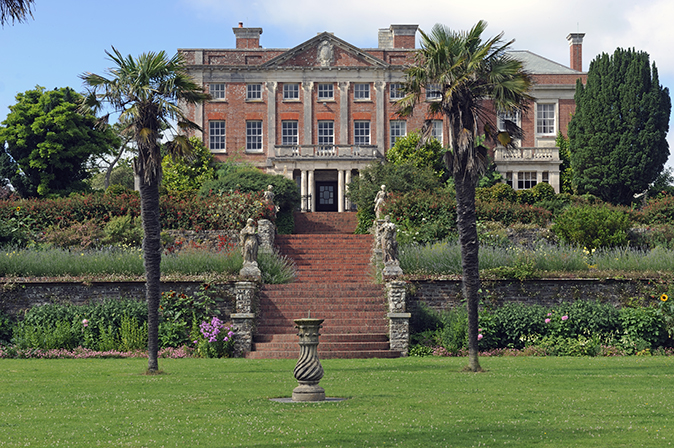
The Bottom Border opens onto a spacious lawn that’s animated by the exotic stilt-walking drama of a series of Chusan palms. At one end is the D-shaped Lily Pond (Hector has a clearly delicious memory of pushing an important visitor into the pond when he was very young), which becomes suddenly electric when the late-afternoon sun floats onto the water.
At the other end is the Toot, a stone summer house that offers a particularly uplifting view up through the garden to the house.
There is an inbuilt stage set, giving a party-ready quality to the terrace layering, and the steps leading up from the Top Terrace to the 18th-century Ice House and Shell Grotto (the next renovation project) take you away to the Mediterranean with their lush planting of echiums and Cordyline australis. Towering yews and enormous bat-winged cedar trees anchor and protect the house and sketchy, windblown Monterey cypress frame every view.
At the end of the Tapeley Park guidebook Hector writes: ‘I hope you enjoy your visit, and if, when you leave you feel better than when you arrived, then Tapeley has done its job.’ I get into the car smiling from ear to ear - job done.
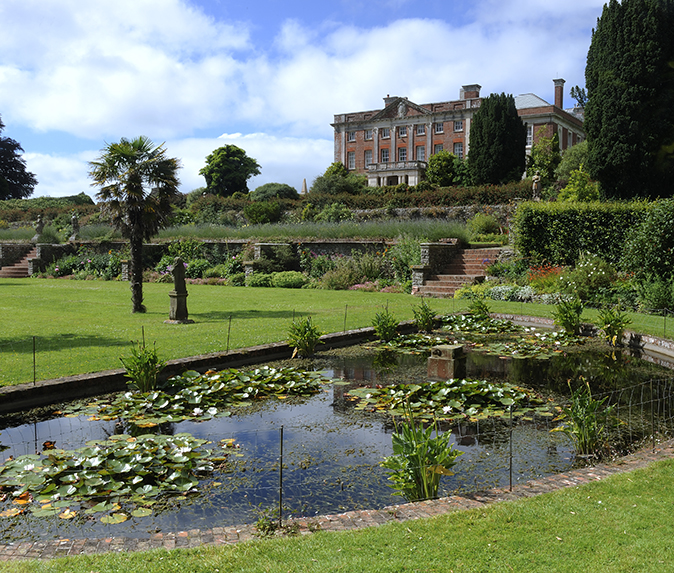
NEED TO KNOW
Size: The overall size of the garden is ‘impossible to quantify’ (the estate itself is about 6,000 acres). ‘The Italian Gardens are perhaps three acres, the Permaculture Garden and the Kitchen Garden just under and just over an acre respectively, and then there’s a mile of woodland walk leading to the Lake,’ advises Hector
Soil: Slightly acidic
Altitude: 300ft above sea level
Position: Set on an elevated plateau overlooking Bideford Bay and the estuary of the River Torridge where it meets the River Taw
Others involved: Kirsty Macdonald. In the 1990s, Mary Keen - who had worked on the gardens at Glyndebourne - advised on the restoration of the Italian Terraces. Devon-based Carol Klein has also offered advice on the garden and designed the Dairy Lawn Border
Tapeley Park and Gardens, Instow, north Devon (www.christieestates.co.uk; 01271 860897). Garden open until October 31, Sunday to Friday, 10am–5pm. Bookings welcome for group tours (20 or more) of the house (which is otherwise not open) and/or for the garden
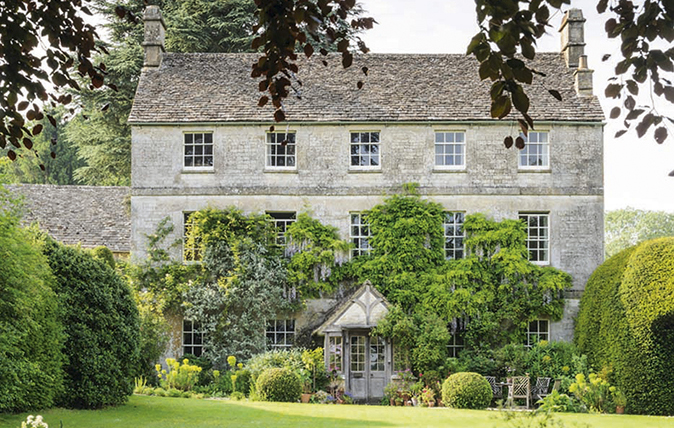
Garden designer Mary Keen’s Cotswold home goes on the market
A gardener’s garden.
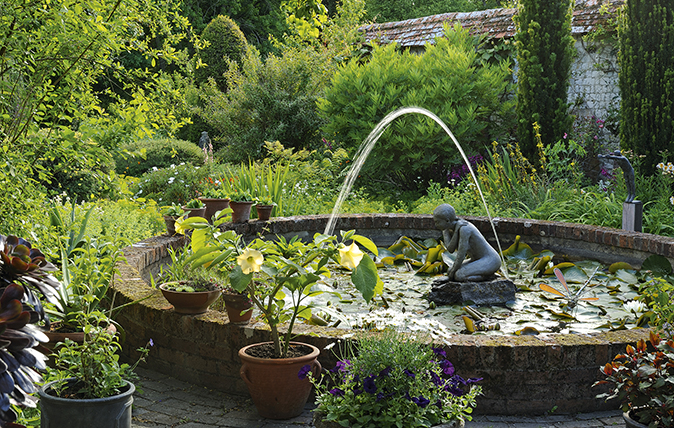
Chisenbury Priory: A handsome and quirky streamside garden developed over decades
Tim Longville discovers how successive owners and artists have made their mark on the grounds of an ancient streamside property.
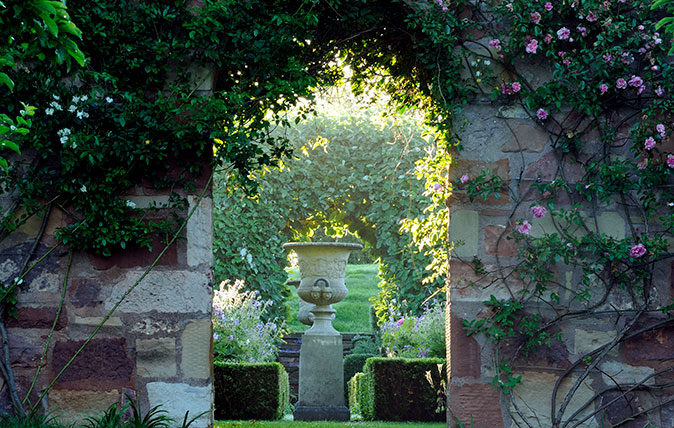
Blackdykes: A romantic, uplifting and inspiring garden by the sea
Blackdykes, in North Berwick, is on a plot barely a mile from the sea that took a huge amount of
Agnes has worked for Country Life in various guises — across print, digital and specialist editorial projects — before finally finding her spiritual home on the Features Desk. A graduate of Central St. Martins College of Art & Design she has worked on luxury titles including GQ and Wallpaper* and has written for Condé Nast Contract Publishing, Horse & Hound, Esquire and The Independent on Sunday. She is currently writing a book about dogs, due to be published by Rizzoli New York in September 2025.
